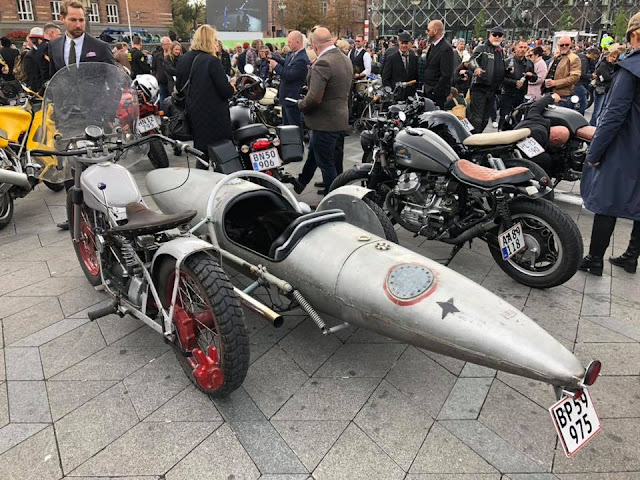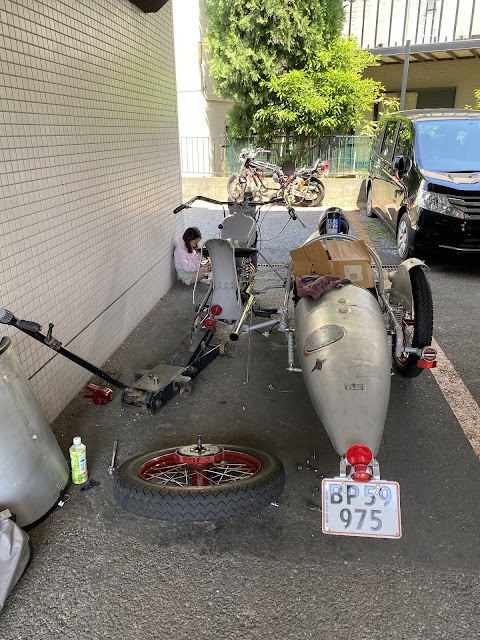The Honda Collection Hall
May 22, 2023
Pleasant roads lead us toward The Honda Collection Hall, which we find after a few detours. Parking outside we hear the roars and screeches from the nearby Twin Ring Motegi racetrack - possibly dentists in their Ferraris - and inside the very large building a collection of vehicles that is simply overwhelming. Starting with Honda's possibly four most important vehicles in the hallway (see pic below), and in the next room moving quickly on through the company's history, the latter room has company founder Sochiro Honda's first race car on prominent display: A typical 1924 open wheel car, but with a Curtiss V8 aircraft engine.
Honda being the planet's major motorcycle manufacturer, having diversed along the way into cars and a few other venues like aircraft and agricultural machinery, there is no way they can possible display every model the company has made. Bikes and cars are parked in groups, usually not too close to each other, so it is easy to soak in the impressions and take pictures.
A few motorcycles of other brands are on display, some times mentioning how superior they were to whatever Honda tried competing against them, be it on the street or on the track. Each and every model is in pristine condition, as befits a museum of this size and standard, and us having arrived before noon on a Monday, there are preciously few other visitors present.
In 2006 a woman from the staff had arranged for the museum's Nimbus to be taken out of storage, so I could take pics of it, and have the experts back home tell what they could about the museum's particular example. I did, wrote to them but never heard back, and try now to hear if they ever got my emails. As it turns out they haven't got the foggiest idea, so we exchange business cards and I promise to repeat the procedure when I get back.
Two tours of the three floors and we're done and can head further north. I found us a perfect route through a long valley to a town 30 miles / 50 kilometers inland of the Fukushima death zone, which is tomorrow's destination. Or was, because I'm sure I'd have enjoyed the second half of this stretch as much as I loved the first half, had it not started pissing down. Nice being sure the engine won't overheat, but soon I'm soaked, and after an hour and with darkness approaching, I call for a hotel an hour short of our first shot.
With my teeth clattering we ride the last half hour to the town of Koriyama, which greets my bike with roads that most certainly would have killed the headlight mount, had Kyushu not already taken care of that. The nice part is the hotel, which in addition to being affordable, had a literary cafe on the ground floor; a class act in my book, so to speak. Then dinner, a stroll through the town's small red light district of 'maid bars' and other questionable ventures involving young women, none of which seem to be doing much business on this rainy evening.
Weather report says it'll rain all day tomorrow, so we book another night.
























Kommentarer
Send en kommentar